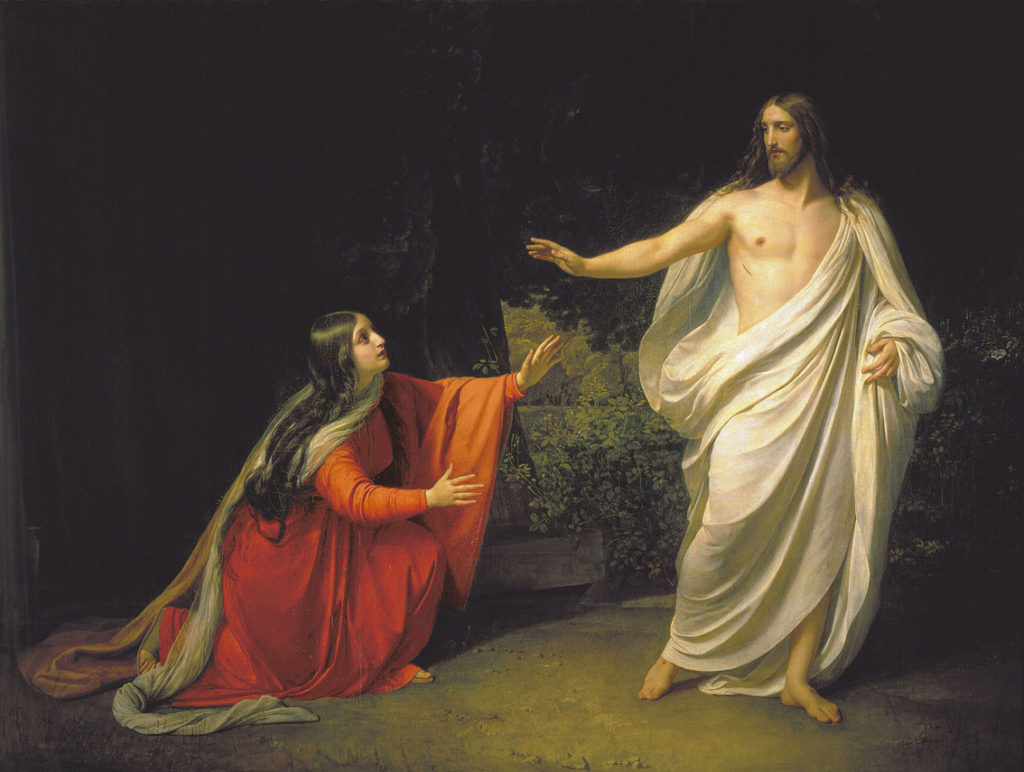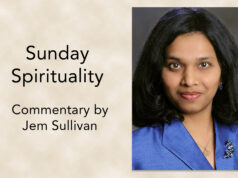No woman in history’s life story may be more misunderstood than that of Mary Magdalene.
She was blessed with extraordinary gift of being the first person to encounter the risen Christ. The miracle of the Resurrection was revealed to — not one of the twelve — but a woman. Surely that meant that Jesus must have held her in great regard. Yet, in 1591, Pope Gregory gave a homily that damaged her reputation forever, implying that she was a prostitute, most likely confusing her with another woman from Scripture.
Since then, scholars have determined that she was not a prostitute, actually a penitent woman who was healed by Jesus. Mary was one of the most common Hebrew names of the era, thus causing people to confuse the many Mary’s found in Scripture: Mary his mother, Mary sister of Lazarus, Mary of Bethany, Mary of Magdala. It’s easy to see why there might have been some identity confusion.

Although she is mentioned a dozen times in Scripture, we don’t know when she was born or died, only that the “Magdalene” attribution probably means she was from Magdala, a prosperous fishing village on the sea of Galilee.
When we first encounter her, she is a woman tormented by seven demons, and Jesus heals her of her torment. (Some scholars say that the “demons” may have in fact been a neurological disorder.) Thereafter, she becomes one of Jesus’ disciples. According to all four Gospels, she was present at the foot of the Cross, along with Jesus’ mother, Mary and the apostle John, witness to his death.
Three days later, Mary and the other women in their group went to the tomb, possibly to anoint Jesus’ body, or simply to check that no harm had come to his resting place. While there, Mary encounters the Risen Christ, who tells her to deliver the news of his Resurrection to his followers. This made her “the apostle to the apostles,” relaying her first-hand account of the discovery of the empty tomb to the men.
Not much is known about her life after that, but scholars have studied her intently over the centuries and legends abound. One legend says that she married the apostle John and moved to Turkey. Another says that she and several other disciples were put into a boat without oars which eventually landed in the south of France. It’s said that she evangelized there until her death and is secretly buried in a cave in Provence.
However and whenever she died, her story lives on in Scripture and in fine art. Many of the great artists have depicted her in portrait over the centuries. And in 1969 the Pope Paul VI issued a decision correcting her reputation as the “sinful woman” of scripture.
St. Mary Magdalene’s feast day is July 22.
She is the patron saint of contemplatives, converts, glove makers, hairdressers, penitents, perfumeries, pharmacists, sexual temptation, tanners, and women.
A wonderful article from U.S. Catholic about the misunderstanding of who she was can be found here: http://www.uscatholic.org/articles/200806/who-framed-mary-magdalene-27585
More information about her life can be found here: https://www.vaticannews.va/en/saints/07/22/st–mary-magdalene–disciple-of-the-lord-.html
Novena prayers to St. Mary Magdalene can be found here: https://www.ewtn.com/catholicism/devotions/prayer-to-st-mary-magdalen-370
http://wellsprings.org.uk/mary_magdalene/index.htm
There are many depictions of Mary Magdalene in fine art. Some can be found here: (Warning: In fine art tradition, some of these painting have exposed flesh.)
https://en.wikipedia.org/wiki/Mary_Magdalene
In the Andrew Lloyd Weber play, “Jesus Christ Superstar” and the film “The Last Temptation of Christ” she is portrayed as a prostitiute. https://ustour.jesuschristsuperstar.com/ https://www.imdb.com/title/tt0095497/
However, the 2018 film “Mary Magdalene” starring Rooney Mara she is not. https://www.imdb.com/title/tt5360996/
Poems have been written about her as well:
To the Lady Magdalen Herbert: Of St. Mary Magdalen by John Donne
Mary Magdalene by Dante Gabriel Rossetti
Happy Magdalene, to Whom by Charles Wesley








